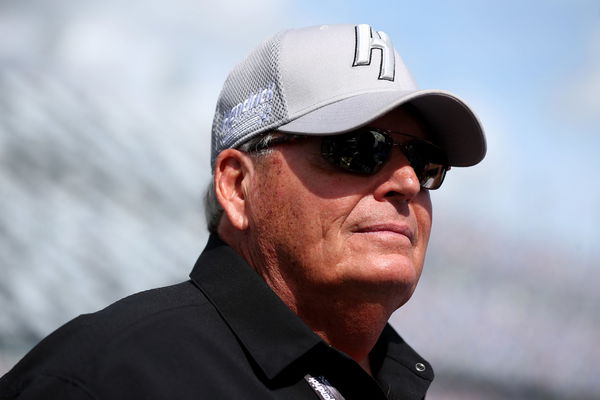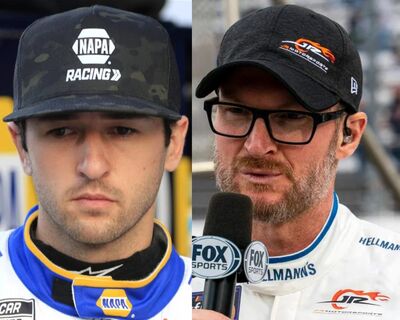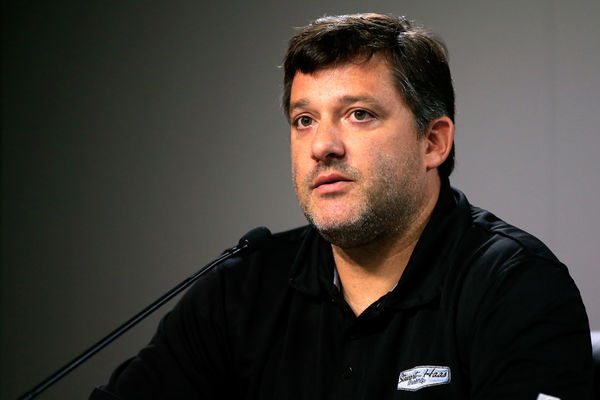Daytona 500 Rules: Distance, Surface, Qualification, Laps & Turns of NASCAR’s Season-Opener

via Imago
Daytona International Speedway plays host to the NASCAR, Motorsport, USA Cup Series for the Daytona 500 in Daytona Beach, FL, USA. Daytona Beach United States of America – ZUMAc04_ 20230219_zaf_c04_386 Copyright: xWalterxGxArcexSrxActionxSportsxPx
Following the quarter-mile exhibition race at the Coliseum, NASCAR’s biggest spectacle – the Daytona 500 – is on the horizon. Following the industry backlash against the Clash and the organization’s execution of it, the hype around the “Great American Race” is through the roof. Drivers like Brad Keselowski, Martin Truex Jr, and Kyle Busch are eyeing a decisive one to get a W in the bags while NASCAR’s villain Denny Hamlin looks to make it his fourth Daytona 500 triumph.
With the fandom all in on the action, anticipating a high-speed thriller at Daytona, let us dive a little deeper into the details of the same, including the qualification procedure, laps, the track surface, and the track whereabouts in full detail.
Gear up for NASCAR’s Super Bowl- The Daytona 500
ADVERTISEMENT
Article continues below this ad
For the unversed, Daytona might be a souped-up version of a speedway race. But there is more than what meets the eye. The 40-driver field will take on the tri-oval, battling it out for the gold and possibly a playoff berth by catching the wind early in their sails. The race will essentially be a 200-lap feature with drivers going pedal to the metal at mind-bending speeds, running three, or four wide to get ahead and claim the W. Despite the persistent criticism of the race, being bland with cars just running around in circles, the high-speed race is one of the most technical races on the planet.

via Getty
DAYTONA BEACH, FLORIDA – FEBRUARY 14: Bubba Wallace, driver of the #23 DoorDash Toyota, and Denny Hamlin, driver of the #11 FedEx Toyota, race during the NASCAR Cup Series 63rd Annual Daytona 500 at Daytona International Speedway on February 14, 2021 in Daytona Beach, Florida. (Photo by Brian Lawdermilk/via Getty Images)
Each turn has a significant role in the race, and as the race goes on, drivers must adapt to the 31-degree banked turns, along with the 3-degree banked straightaways and improvise to the changing conditions to stay ahead of the rest for the whole 500-mile fixture. To add ammunition to the excitement factor, the last six out of the seven Daytona 500 have gone into overtime.
Qualification Process for Daytona 500
Trending

Rick Hendrick Lending a Helping Hand to Stewart-Haas Racing Amid Dire Times Leaves Insider Infuriated
May 19, 2024 06:50 AM EDT

Chase Elliott Refuses to See Eye to Eye With Dale Jr’s NASCAR Vision With 9-Words
May 18, 2024 06:25 PM EDT

Chase Elliott Skeptical of Dale Earnhardt Jr’s Revival of NASCAR’s “Lost Relic” After Years of Deliberation
May 18, 2024 07:11 PM EDT

HMS’ Class Act Backfiring on Tony Stewart & Co. Leaves Kevin Harvick’s Former Crew Chief in Shock
May 19, 2024 07:14 AM EDT

Rick Hendrick & Co.’s Partnership with Tarnished Sponsor Triggers Bitter Outburst- “F*CK Liberty”
May 17, 2024 04:29 PM EDT
Get instantly notified of the hottest NASCAR stories via Google! Click on Follow Us and Tap the Blue Star.

Follow Us
Before the Daytona 500, is qualifying on Wednesday and the Duel races that set the grid behind the front row on the next day, Thursday, leading up to Sunday’s main event. Unlike regular Cup races, the Daytona 500 distinguishes itself, unfolding with a unique format spanning multiple days of on-track action to establish the starting lineup.
The process kicks off on Wednesday, Feb. 14, with single-car qualifying, where the order will be determined through a random draw conducted by NASCAR.
Watch This Story: The unmatched legacy of Dale Earnhardt at Daytona 500
During this session, one driver will claim the pole position, securing a spot on the front row. Additionally, one more non-chartered car from each qualifying group will earn a position in the Daytona 500 based on their qualifying speed.

USA Today via Reuters
Feb 19, 2023; Daytona Beach, Florida, USA; NASCAR Cup Series driver Ricky Stenhouse Jr (47) leads Joey Logano (22) on the last lap as Kyle Larson (5) crashes with Travis Pastrana (67) during the Daytona 500 at Daytona International Speedway. Mandatory Credit: Mark J. Rebilas-USA TODAY Sports
The qualifying drama continues on Thursday, Feb. 15, with the Bluegreen Vacation Duel races.
ADVERTISEMENT
Article continues below this ad
Above all, the field will be divided into two groups mainly for these 60-lap races, each of which will determine the remainder of the Daytona 500 starting lineup.
In each Duel race, one non-chartered car will secure its place in the Daytona 500, adding an extra layer of competition and excitement to the fixture.
ADVERTISEMENT
Article continues below this ad
The DAYTONA 500 will be at 2:30 PM ET on Sunday, February 18th. NASCAR’s broadcast partner for the race will be FOX with radio coverage from MRN and SiriusXM NASCAR Radio.
READ MORE: Can William Byron Steal Chase Elliott’s Throne as the HMS Golden Boy at the 2024 Daytona 500?
Edited by:

Rohan Karnad

